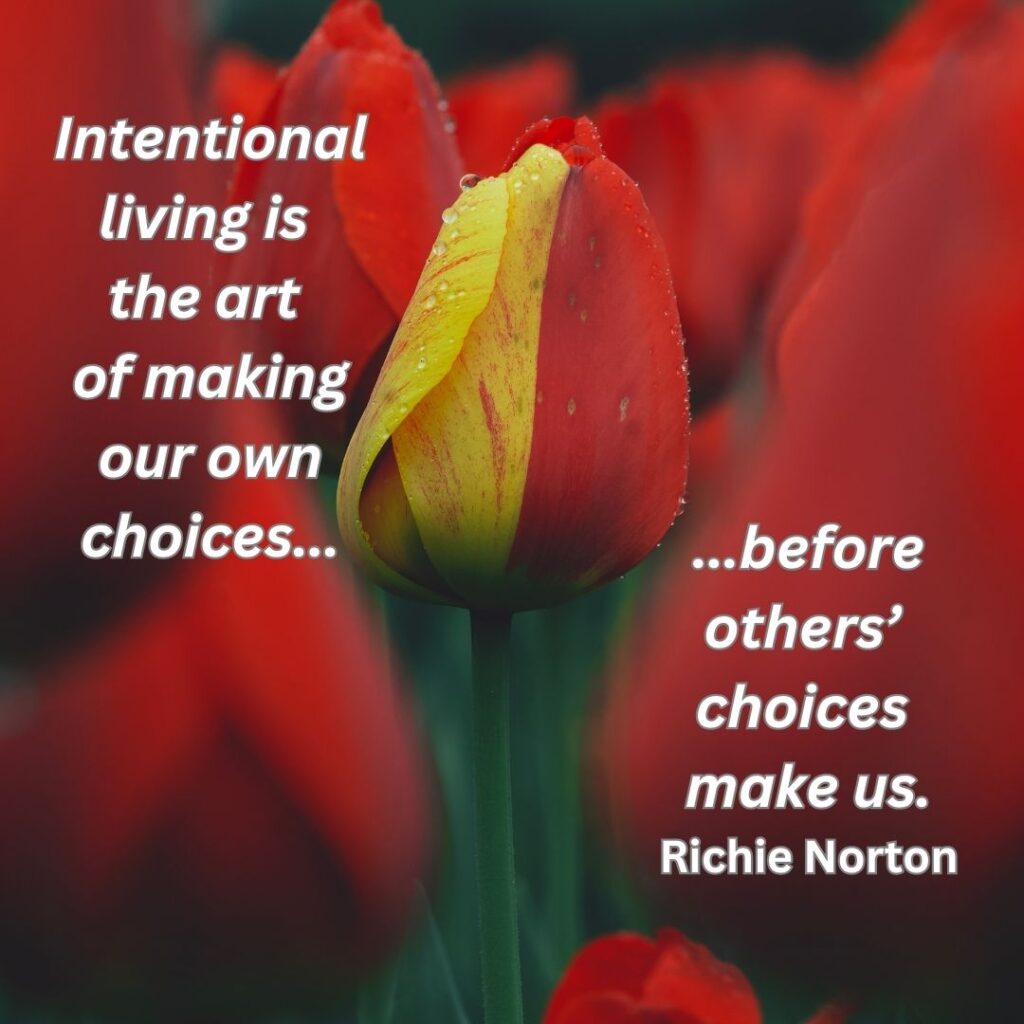“Intentional living is the art of making our own choices before others’ choices make us.” Richie Norton
Happy Monday!
I was thinking about the challenges we face in communicating this week. Often, we share a thought or comment, thinking we’re being very clear about our meaning. We consider something interesting or, perhaps, ridiculous and comment earnestly about what we think or feel about the object of our attention. Sometimes we explain ourselves well, while other times, we speak impulsively. There are times when we feel entirely understood and other times when we feel confused by the response of others.
I do a lot of work with couples and find one of the most common phrases is, “That’s not what I meant.” For example, one partner may have spent many days processing an issue and then delivered his/her conclusions to the other partner more as a matter of fact than as a topic for discussion. The other takes offense, noting his/her objections. The partner delivering the information feels defensive; it’s almost like they are having entirely different conversations. Then he says, “You’re not considerate of my feelings, thoughts, and ideas. Why can’t you include me in your deliberations?” She replies, “I thought you understood where I was coming from. I didn’t mean to exclude you. That’s not what I meant.”
With relationships, it’s a matter of intention and making inclusive choices rather than simply delivering information that has been processed and vetted. Sometimes we feel that other people have a private view of what’s going on in our minds. As a result, we make assumptions and are surprised when others don’t follow our logic. And it doesn’t happen only with couples. The same scenario happens in businesses, among friends, and within family systems.
That’s where intentional living comes into focus. Intentional living supports making choices that enhance communication, ensuring that thoughts and ideas translate more readily to others. It’s a choice to be intentional. And, more interesting is that our lack of intentional choice allows others’ intentions or choices to manifest in our lives.
I found several examples of intentionality, but the following keeps choice in the mix:

Photo by Aaron Burden. No copyright infringement intended.
We can respond more comprehensively to others as we engage our strengths, choices, and intellect in intentional living. We can model our intentions in a more robust, more understandable manner. And we can mitigate the effects of misunderstandings. The process makes us safe people with whom to communicate and provides comfort in times of distress.
Here are a couple of Scripture references:
“His intent was that now, through the church, the manifold wisdom of God should be made known to the rulers and authorities in the heavenly realms.” Ephesians 3:10 (NIV)
“For the word of God is living and active and full of power [making it operative, energizing, and effective]. It is sharper than any two-edged sword, penetrating as far as the division of the soul and spirit [the completeness of a person] and of both joints and marrow [the deepest parts of our nature], exposing and judging the very thoughts and intentions of the heart.” Hebrews 4:12 (AMP)
Notice how these verses convey the idea that managing intentions are a large part of wisdom. Intentional living is not something that we occasionally practice when there are critical decisions to make. Instead, the lifestyle involves daily attention to details and choices to ensure balance and wellbeing.
Let’s seek intentional living this week. Practice making choices that benefit both ourselves and others. And communicate in a way that fosters genuine care, concern, and safety for those within our spheres of influence. Our choices may provide a positive model for others to follow!
Be Well & Be Blessed!
Lucinda
Comments by lucinda